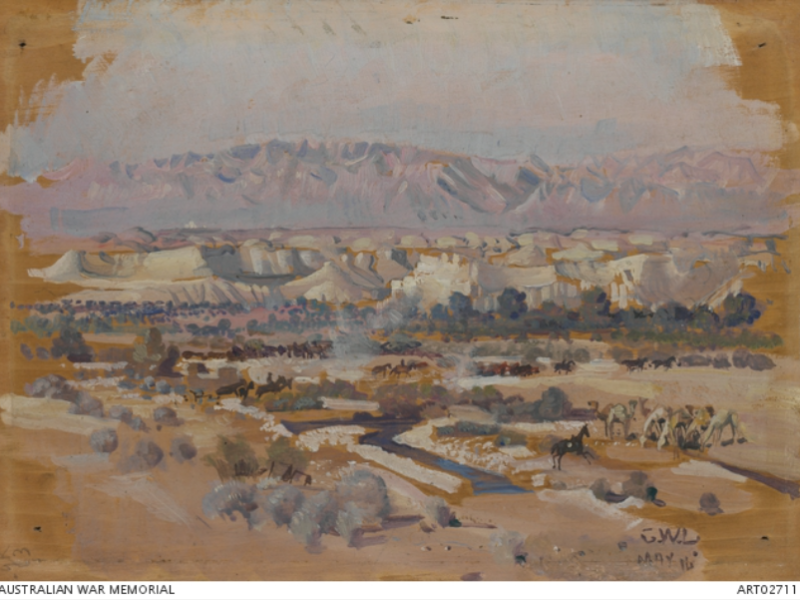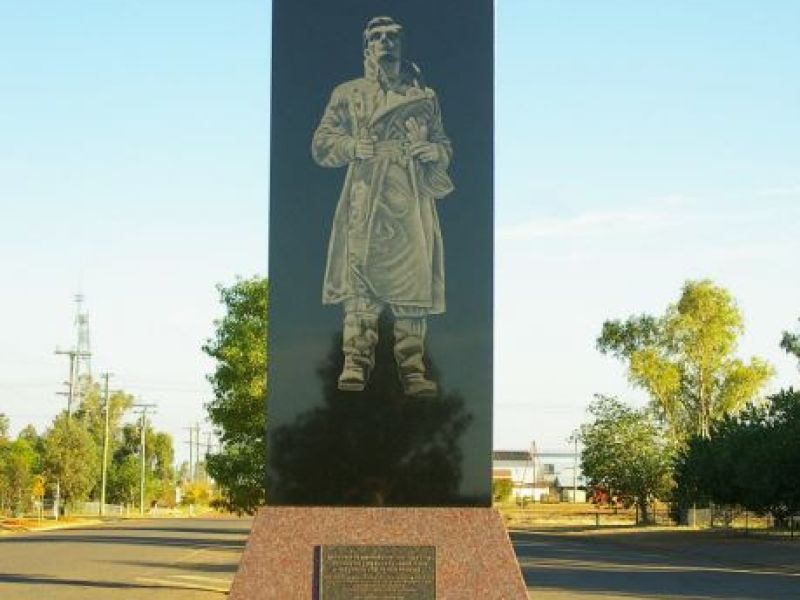Private John Johnston, 11th Australian Light Horse Regiment
John Johnston was born in Boulia in Central West Queensland in April 1891, the son of George Michael and Lucy Agnes Johnston.
Known as “Jack”, he worked as a station hand at Oondoona Station, near Winton in Central West Queensland.
On 8 October 1917, John Johnston was among a group of Indigenous recruits accepted for service, becoming reinforcements for the 11th Light Horse Regiment.
Due of the large number of Aboriginal stockmen who enlisted in the 11th Light Horse, it became known as the “Queensland Black Watch”.
Johnston had attempted to enlist earlier but had been refused on the basis of his Aboriginal heritage.
At the beginning of the First World War, the Defence Act specifically exempted those “not of substantial European descent” from service in the Australian Imperial Force (AIF), which included “Aboriginals, half-castes or men with Asiatic blood”.
Some army recruiters chose to ignore this rule; a potential soldier was a potential soldier, regardless of the colour of his skin. From 1917, the enlistment rules conceded that recruits could be enlisted if one parent was European.
Because of the potential difficulties in enlisting, many Indigenous recruits made multiple attempts, travelling to other recruiting offices.
Over 1,000 Indigenous soldiers served in the AIF during the First World War; 147 made the ultimate sacrifice. At least 70 served at Gallipoli; 13 were killed in action.
In the AIF, everyone was paid the same and the pay was good. As well travel and adventure, soldiers could send money home to their families.
After training in Brisbane, Johnston embarked from Sydney on board the troopship Ulysses, arriving in Egypt in January 1918. Conditions on the voyage and later in Palestine were difficult with extreme heat, harsh terrain and water shortages.
Johnston entered an area of fighting for control of the Suez Canal and the Sinai Peninsula. Australian troops had helped to successfully repel Turkish attacks around Gaza and Jerusalem.
The 11th Light Horse had moved into the Jordan Valley where it was defending the crossing points over the Jordan and subjected to hostile artillery shelling.
On the afternoon of 1 June 1918, the enemy again shelled the 11th Light Horse. Johnston was with a group of men leading their horses when he was struck. He was rushed to the nearest field ambulance but his wounds were mortal and he died on admission.
John Johnston was initially buried at Jericho Cemetery. Later, he was interred at the Jerusalem War Cemetery, alongside over 2,400 other allied casualties of the First World War.
Military authorities were unable to contact Johnston’s mother Lucy, his nominated next of kin. Today, his service medals, commemorative certificates and plaques remain unclaimed. His name is listed on the Honour Roll at the Australian War Memorial and the Boulia War Memorial in Queensland.
Duncan Beard, Military History Section
Image: The valley of the River Jordan, looking towards Jerusalem, with Australian troop horses and camels drinking at river. Lambert painted this during his first visit to Palestine in May 1918.

 Australian War Memorial
Australian War Memorial